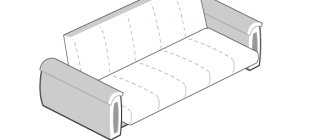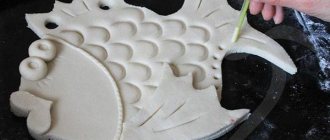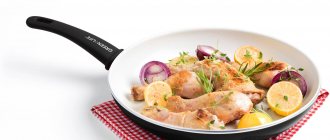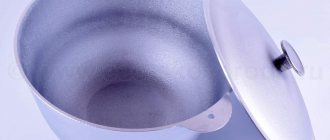During the period of active procurement of fruits and vegetables for the winter, housewives begin to select the most convenient method of sterilizing jars. The method where glass containers are held above steam takes a lot of time, and it is also unsafe - carelessness can lead to burns. The use of a microwave oven requires considerable energy consumption and is not very convenient for large quantities of containers. Modern housewives know that sterilizing jars in the oven is an affordable, fast, high-quality method of preparing glassware for further use. This method has a number of advantages, which will be fully revealed if you take into account some of the subtleties and features of the process.
Is it possible to sterilize jars in the oven?
Before learning how to sterilize jars in the oven, empty or with blanks, you need to understand whether processing dishes at high temperatures in the oven is allowed? Sterilization using the traditional steam method gives good results. But this method is not always practical. If you need to process a lot of dishes, then sterilization turns into a long process, since only one container is placed above the boiling water in the kettle.
For successful preservation, you need to properly prepare the container.
To save time, housewives discovered all the benefits of heat treatment in the oven. This is one of the safest options, provided you choose the optimal mode. In this case, it is necessary to follow certain rules, then the jar will not burst, and all bacteria will be destroyed.
It is important to immediately prepare a suitable container that will not burst.
Basic Rules:
- The household appliance must be clean before use;
- the glass container is sterilized immediately before placing the workpieces;
- the jars should not touch (they must be arranged in a free order);
- avoid sudden changes in temperature (the container may burst);
- observe the timer;
- Do not allow cold water to come into contact with dry, sterilized jars.
It is necessary to carefully inspect the containers. If cracks or chips are found on the neck, such containers cannot be subjected to heat treatment.
Important! Before heat treatment, containers are placed only in an unheated oven. After sterilization is completed, they must cool down before they can be removed.
Dry disinfection of jars in the oven is effective, kills all bacteria, eliminates the possibility of burns and stuffiness in the room (which is typical for the steam sterilization process).
Using an oven you can carry out high-quality sterilization. In addition, the containers will not need to be additionally dried, which often takes a lot of time.
Precautionary measures
It is easy to get burned when sterilizing jars inside the oven. This happens because the temperature in the middle of the body rises to 120-150 degrees. At the same time, the outer casing also heats up. The removed containers have a very high temperature. To avoid burns, you must follow a few simple rules:
- Never remove containers with bare hands.
- When removing containers, hands must be dry.
- It is necessary to use only dry oven mitts and towels.
- Each hand should have a separate oven mitt. If one towel is used, it should be large enough to completely enclose the jar.
- Children are not allowed in the kitchen during sterilization.
If possible, it is necessary to wait for the containers inside the body of the heated device to partially cool. This measure partially reduces the risk of burns. Despite the high temperature in the room, it is recommended to work in a long-sleeved shirt for additional hand protection.
You can sterilize jars before canning using different methods. This can also be done using an oven, even if it is electric. Knowing the rules for sterilizing products, you can successfully use this method and thus save time.
How to Sterilize Empty Jars and Lids in the Oven
Before heat treatment, jars and lids must first be prepared. In this case, only metal lids are subjected to dry sterilization. The containers should be free of chips, scratches, cracks, rust (applies to lids) and other abrasions. This is necessary to prevent the seal of the vessel from being compromised both during processing and during further storage of the workpieces.
The lids, like the jars, must be thoroughly rinsed, and then placed in a pan of water and boiled for 15 minutes.
Lids and containers are thoroughly washed and rinsed. If chemicals are used for cleaning, you need to rinse longer with running water. In the first option, the container is installed with the neck down, in the second – up, to evaporate excess water.
Both dry and wet vessels can be sterilized in the oven.
Preliminary preparation for the process
Containers for blanks need preparation, namely, you need to find out how sealed the packaging for winter products is and how to properly wash the containers.
About the tightness of cans
Without sealing there will be no storage; the jar with its contents will not last even a month. To make the closure airtight, use tin lids with a rubber band.
Unvarnished tinplate is suitable as lids for jams, preserves, pear and apple compotes. But it is better to cover vegetable marinade, sour berries and sour fruits with varnished yellow lids.
Cover to cover discord PHOTO: koffkindom.ru
If the jar involves the use of a screw cap, then this is even more convenient.
When the screwed cap cools down, it creates a vacuum effect inside PHOTO: metalprint-ua.com
Wash the jars correctly
First, we inspect each container, discarding vessels with cracks and chips.
Advice! Threaded jars are also checked by screwing their lids on. It should fit tightly around the neck.
The test is carried out as follows: water is poured into the jar, the outside of the container is wiped dry. Now the container is screwed on with a lid, turned over and shaken. Droplets of water appearing on the table will let you know that the closure is not tight.
At the first stage of washing, it is better to fill each jar to the top with water and leave for a couple of hours. It happens that solid particles invisible to the eye stick to the inner walls, but in water they get wet and are washed out perfectly.
Washed jars are waiting in the wings PHOTO: kinkong.ru
For washing we use baking soda. It eliminates all odors and is completely washed off along with the dirt.
Important! Do not use an already used sponge to wash jars! It must be new!
Then the lids are washed, this requires warm water and laundry soap PHOTO: kinkong.ru
Sterilizing jars in an electric oven
Sterilizing jars in the oven of an electric stove is much easier, since the temperature in such a device is evenly distributed.
Heat treatment is carried out according to the following instructions:
- the oven must be cleaned and free of foreign odors;
- clean containers and metal lids without rubber are placed on a wire rack or baking sheet in a loose order, not tightly to each other;
- place in a cold oven;
- heating should be gradual and take place at a certain temperature range: 40° - 2 min, 60° - 1 min, 80° - 1 min, 100° - at least 1 min (the maximum temperature for sterilizing glass jars in an electric oven is 120-150 °);
- After the set timer ends, wait 5-10 minutes until the containers cool down.
You need to carefully remove the jars using oven mitts and towels.
For reference! If hot pouring is used for preservation, you can use hot jars. Warm or chilled products are placed only in chilled containers.
When processing dishes in an electric oven, you need to take into account the location of the heating elements. It is necessary to install containers at the same level or increase the disinfection time interval for items placed on the lower tier of a household appliance.
There are many benefits to using ovens for sterilization. Such seams are perfectly stored and almost never explode.
Sterilizing jars in a gas stove oven
The sterilization process in a gas oven is practically no different from processing in an electric oven. There is only one difference - the maximum heating temperature is 180°. The fire is lit at low power so that the jars heat up gradually.
For the first 5-10 minutes, the thermometer should show 50°, then the temperature increases to the limit set for the gas stove.
The volume of processed containers affects the sterilization time:
- 0.5-0.75 l – 10 minutes;
- 1 l – 15 minutes;
- 1.5-2 l – 20 minutes;
- 3 l – half an hour.
10 minutes are enough to sterilize the lids.
Pasteurization of cans in the oven
Processing at high temperatures is not always suitable for preserving the beneficial properties and taste of products. In this case, longer heat treatment at lower temperatures is appropriate.
Thanks to heating, the container is not only sterilized, but also dried. This saves time on additional drying of containers, as after steam treatment.
The time interval for pasteurization of empty cans is increased by 1.5-2 times, and the temperature is reduced by 10-15°. How to properly pasteurize a glass container:
- the jars are placed neck down in a cold oven;
- heating the space of the household appliance should be gradual (to begin with, set the temperature to 60°);
- after a few minutes, increase the degrees to the maximum temperature for pasteurization - 90°;
- processing time is at least 20 minutes.
After heat treatment, it is recommended to immediately cover disinfected dishes with a clean lid.
Advantages of the method
The advantage of the method is the simultaneous processing of a large number of containers. While the process is going on, you can go about your business and not stand at the stove. Here are some more “bonuses” of this sterilization method:
- efficiency - under the influence of high heating temperatures, bacteria die;
- comfort - steam does not accumulate in the kitchen, as when processing cans in a water bath, the room does not become stuffy;
- dryness - since sterilization is carried out without water, there is no need to wait until the containers dry;
- safety - if basic precautions are taken, the risk of burns is minimal;
- safety of cans - containers, provided certain rules are followed, rarely break.
How to sterilize jars with blanks
Many recipes for preparations require sterilization of glass containers along with the ingredients. This is necessary to ensure that canned foods last longer.
Most recipes for winter preparations require sterilizing jars in the oven along with the ingredients.
How to properly sterilize filled jars in the oven:
- glassware can be placed not only in a cold oven, but also in a slightly heated oven;
- there should be a distance of at least 5 cm between the cans (up to 6-8 cans with a volume of 1-1.5 l can fit);
- each jar can be covered with a metal lid (you cannot screw it on);
- set the required temperature (mostly 120°).
Place containers with ingredients without lids in a cold oven.
After heating to the desired degrees, you need to set a timer. The minutes are recorded from the moment when the surface of the workpiece begins to boil. If the recipe does not indicate how long heat treatment is required, then sterilization is carried out for the same amount of time as for empty jars.
Leave to sterilize for 20 minutes (time may vary depending on the volume of the container).
After completing the process, the containers with the ingredients are carefully removed from the oven and immediately rolled up.
Cover the canning with a lid.
Important! Sealings are placed only on a dry towel. If it is even slightly damp, the jar may burst due to temperature changes.
Common mistakes
Evidence of improper sterilization is swelling and tearing of lids.
It is important to remember that you cannot remove jars after sterilization with a wet cloth. It is prohibited to place hot foods in cold glass containers.
It is important to observe the temperature regime of sterilization. Many housewives neglect this rule. As a result, the bacteria are not completely destroyed and continue to multiply. The product will deteriorate and characteristic swelling will appear on the lid.
The second reason for the development of bacteria is that the jars have been lying around for a long time after sterilization. It is necessary to remember the shelf life of disinfected containers.
Ripping off the lid is a rare but common occurrence. Occurs due to overheating of containers when the temperature exceeds 150 degrees Celsius. The glass jar bursts and scatters in all directions. You need to be very careful, it is dangerous for human life.
How to sterilize empty jars without an oven
Disinfection using an oven is just one of the options for processing cans. There are several other methods you can use.
For a couple
In this situation, you will need a saucepan, the size of which will depend on the number of jars to be sterilized.
The container is filled with water and brought to a boil.
As soon as the water boils, a metal sieve, colander or other structure that allows steam to pass through is placed on the surface. The containers are placed upside down on top. For containers with a volume of 0.5 liters, 10 minutes of treatment is enough, for 1.5 liters - 20 minutes, 3 liters - 30 minutes.
A sign that the jars have been sterilized will be large drops of water running down the glass.
For reference! A kettle, a double boiler, a pressure cooker, a dishwasher, and even a solution of potassium permanganate are also used for sterilization.
On the water
One of the easy and energy-intensive methods. In this case, you will need a large saucepan. The container is filled with water, jars are placed in it, put on fire and brought to a boil. After which the dishes are taken out and laid out on a dry towel with the neck facing up.
For heat treatment, 5 minutes in boiled water is enough.
Microwave
Killing germs in the microwave speeds up the disinfection process. Only cans can be processed; it is advisable to boil the lids in a separate container.
To remove the lids from the pan, it is better to first drain the water or use special tongs.
To carry out the procedure, jars filled with water (about 2 cm from the bottom) are placed in the microwave oven. Empty containers are prohibited. The maximum power and timer are set for 5-6 minutes. The water in the container should boil. After which the cans must be removed with dry oven mitts.
The larger the container, the more time it will take for heat treatment.
Additional recommendations
Finally, let's look at some important tips. If you follow them, you can be sure that the jars will be sterilized correctly. Here's what we recommend:
- Be sure to wash containers before sterilization. You can do this in the dishwasher without using detergent.
- Do not use commercial cleaning products to wash jars. They contain a large number of chemical components that are difficult to wash off with water.
- After washing, rinse 3 liters. water to remove chemical compounds that remain on the surface. First of all, clean the neck. Most often dirt and streaks of rust remain on it.
- If there are still drops of water in the container after sterilization, turn it over and leave it to dry.
- Use only a clean and dry towel. It is advisable to iron it on the front and back sides before use.
- Sterilize containers no earlier than 2 hours before rolling.
- Before sealing food, do not touch the neck of the jar so that microorganisms do not penetrate inside.
- After sterilization, wait until the jars are completely dry before adding food.
- You should not wipe containers before storing food, as you risk introducing germs and bacteria.
Proper sterilization is the key to long-term storage of homemade products. If you choose any method shown and follow the instructions, you can save the product for a year or more.











